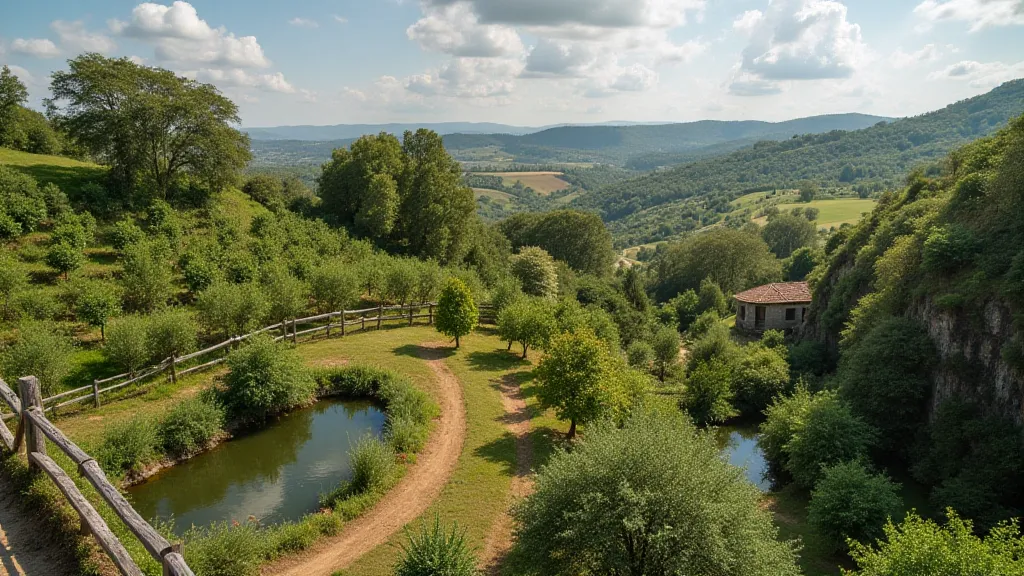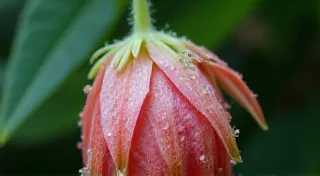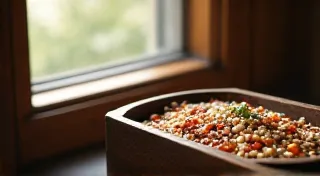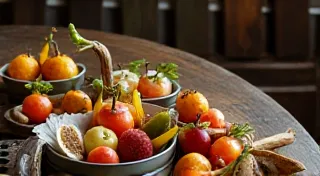The Obsidian Orchard: Cultivating Resilience in a Changing Climate
The world feels brittle these days, doesn’t it? Headlines scream of record temperatures, erratic rainfall, and a climate in constant, unsettling flux. But within that fragility, there’s also a quiet strength, a potential for adaptation that resonates deep within the earth, and within the legacy of forgotten cultivars. I find myself increasingly drawn to this strength, not in grand gestures, but in the meticulous act of tending an orchard – a small, personal sanctuary of resilient fruit.
My own journey into this world began not with a seed, but with a forgotten accordion. My grandfather, a stoic farmer with hands calloused from years of coaxing life from the land, had one tucked away in the attic – a Hohner Victoria, its bellows cracked and its keys frozen in a silent testament to a life lived through hardship and joy. Restoring it wasn’t merely a mechanical task; it was an archaeological dig into the soul of a man who, like the heirloom fruits I now champion, had weathered storms and retained a vital, enduring quality. That accordion, and the painstaking process of bringing it back to life, sparked in me a profound appreciation for craftsmanship, for lineage, and for the tenacity of things that are meant to last.

Beyond the Supermarket: Unearthing Forgotten Fruit
The supermarket offers a uniformity – a predictable sweetness, a familiar shape. But that uniformity comes at a cost: a loss of genetic diversity, a vulnerability to disease, and a disconnection from the rich history of our food. The fruits that grace our grocery shelves are often the result of selective breeding focused on traits like shelf life and transportability, often at the expense of hardiness and inherent resilience. The truly exceptional fruits – the ones that thrived in challenging conditions centuries ago – have largely been lost to the relentless march of “improvement.”
My orchard is a testament to these forgotten varieties. I’m not seeking the biggest apples or the sweetest peaches. I'm seeking fruits that embody a quiet defiance – cultivars that thrived in marginal lands, that withstood droughts and freezes, and that possess a depth of flavor that modern breeding has diluted. Consider the ‘Arkansas Black’ apple, a dark, almost black fruit that thrives in hot, humid summers and produces a tart, complex cider. Or the ‘Roxbury Russet,’ thought to be the progenitor of so many modern apple varieties, rediscovered and revitalized after decades of neglect. These aren's just fruits; they's living links to the past, carrying within them the accumulated wisdom of generations. Understanding how these traits are passed down and maintained is vital; exploring the preserving genetic diversity in fruit varieties can offer further insight into the enduring qualities of these forgotten cultivars.
The Science of Resilience: Understanding Genetic Adaptation
The resilience of these heirloom varieties isn’t a matter of romantic nostalgia; it’s rooted in sound science. Older cultivars possess a greater genetic diversity than their modern counterparts. This diversity is a reservoir of traits – drought tolerance, disease resistance, cold hardiness – that can be expressed when faced with environmental stress. Think of it like this: a monoculture of wheat is like a single accordion key – easily damaged. A diverse orchard, rich in genetic variation, is like an accordion with a full range of keys, capable of playing a complex, nuanced melody, even when some keys are slightly out of tune.
Understanding pollination is crucial too. Many heirloom varieties are not self-pollinating, meaning they require a different variety nearby to produce fruit. This also encourages genetic exchange, further strengthening the orchard's overall resilience. Furthermore, observing the natural ecosystem – the beneficial insects, the fungal networks in the soil – is key to creating a self-regulating system that minimizes the need for chemical interventions. It's about working *with* nature, not against it. The interplay of sunlight and soil health are critical; learning more about maximizing solar exposure for abundant fruit can provide a deeper understanding of the orchard’s vitality.
The soil itself is the foundation of it all. Building healthy soil through composting, cover cropping, and no-till practices isn't just about providing nutrients; it's about creating a living ecosystem that supports the trees’ root systems and enhances their ability to withstand stress. Healthy soil acts as a sponge, retaining moisture during droughts and providing a buffer against extreme temperatures. The unseen world beneath our feet is a complex network; investigating the silent language of roots and mycorrhizae reveals how these intricate relationships contribute to orchard health.
Sustainable Practices for a Volatile Future
My orchard is more than just a collection of fruit trees; it's an experiment in sustainable cultivation. I’m not aiming for maximum yield; I’m striving for long-term stability. This means embracing techniques that mimic natural ecosystems: agroforestry (integrating trees and shrubs), rainwater harvesting, and the use of natural pest control methods. Addressing common pests and diseases with holistic approaches is a key component of maintaining this equilibrium.

Water scarcity is an ever-increasing concern. Rainwater harvesting – collecting and storing rainwater in tanks – has become an essential part of my orchard's water management strategy. Drip irrigation, delivering water directly to the roots, minimizes water loss through evaporation. Mulching around the trees helps retain moisture and suppress weeds. These aren't just “good practices”; they're necessities for survival in a changing climate. Beyond simply managing water resources, encouraging beneficial relationships between plants can lead to a more robust ecosystem – learning about companion planting for enhanced growth and flavor can optimize the orchard’s overall performance.
Beyond the technical aspects, there's a philosophical dimension to resilient cultivation. It's about cultivating patience, humility, and a deep respect for the interconnectedness of life. It's about recognizing that we are not in control, but rather stewards of a precious and fragile inheritance. Considering the broader ecosystem, including the soil microbiome and insect populations, is key to long-term success.
The Accordion’s Echo: A Legacy of Enduring Strength
Just as restoring my grandfather's accordion required a delicate touch and a deep understanding of its mechanics, cultivating a resilient orchard demands a similar level of care and attention. It's about more than just planting trees; it's about nurturing an ecosystem, preserving a legacy, and cultivating a connection to the past.

The fruits of my orchard – the dark, tart ‘Arkansas Black’ apples, the sturdy ‘Roxbury Russet’ – are more than just food; they’s tangible links to a time when humans lived in greater harmony with the land. They are a reminder that resilience isn't about brute force; it's about adaptation, diversity, and a deep respect for the wisdom of the natural world. And just like the enduring melody of an antique accordion, the fruits of this resilient orchard resonate with a quiet strength, a testament to the enduring power of nature and the enduring spirit of humankind. The process of nurturing this legacy requires constant learning and adaptation. Continuing to explore the scientific underpinnings of resilient cultivation allows for refinement of practices and a deeper appreciation for the natural world. The interconnectedness of these systems demands a holistic approach, recognizing that the health of the orchard is inextricably linked to the health of the planet.
The challenges of a changing climate necessitate a shift in perspective, moving away from short-term gains and embracing a long-term vision of sustainability. Building soil health is paramount, creating a foundation for resilience that can withstand environmental stresses. Observing and mimicking natural ecosystems provides valuable insights into effective cultivation practices. Maintaining genetic diversity is key to adapting to future challenges. Cultivating a deep respect for the natural world is essential for ensuring the long-term success of the orchard and the well-being of future generations.





